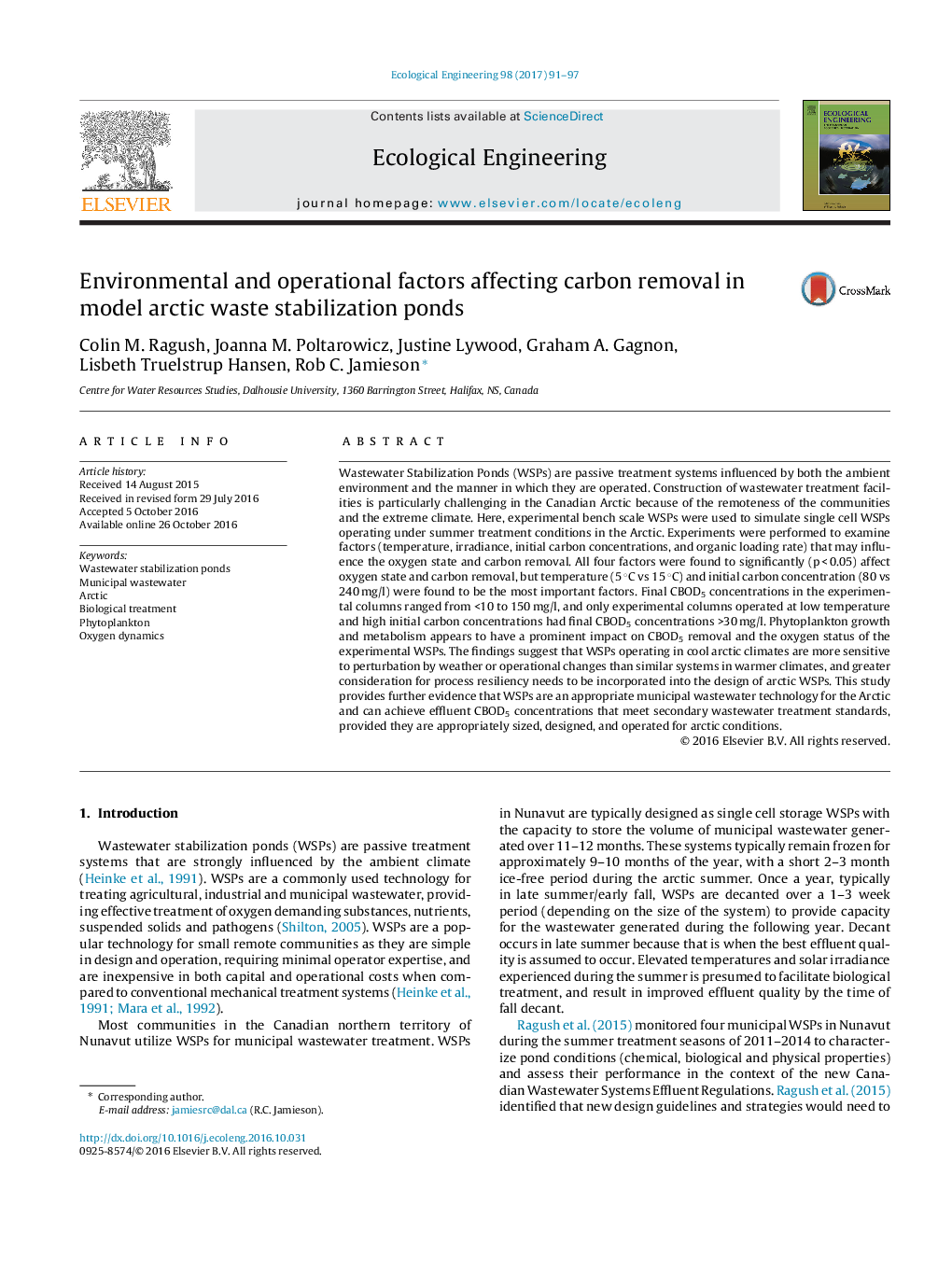| کد مقاله | کد نشریه | سال انتشار | مقاله انگلیسی | نسخه تمام متن |
|---|---|---|---|---|
| 5744058 | 1618001 | 2017 | 7 صفحه PDF | دانلود رایگان |
Wastewater Stabilization Ponds (WSPs) are passive treatment systems influenced by both the ambient environment and the manner in which they are operated. Construction of wastewater treatment facilities is particularly challenging in the Canadian Arctic because of the remoteness of the communities and the extreme climate. Here, experimental bench scale WSPs were used to simulate single cell WSPs operating under summer treatment conditions in the Arctic. Experiments were performed to examine factors (temperature, irradiance, initial carbon concentrations, and organic loading rate) that may influence the oxygen state and carbon removal. All four factors were found to significantly (p < 0.05) affect oxygen state and carbon removal, but temperature (5 °C vs 15 °C) and initial carbon concentration (80 vs 240 mg/l) were found to be the most important factors. Final CBOD5 concentrations in the experimental columns ranged from <10 to 150 mg/l, and only experimental columns operated at low temperature and high initial carbon concentrations had final CBOD5 concentrations >30 mg/l. Phytoplankton growth and metabolism appears to have a prominent impact on CBOD5 removal and the oxygen status of the experimental WSPs. The findings suggest that WSPs operating in cool arctic climates are more sensitive to perturbation by weather or operational changes than similar systems in warmer climates, and greater consideration for process resiliency needs to be incorporated into the design of arctic WSPs. This study provides further evidence that WSPs are an appropriate municipal wastewater technology for the Arctic and can achieve effluent CBOD5 concentrations that meet secondary wastewater treatment standards, provided they are appropriately sized, designed, and operated for arctic conditions.
Journal: Ecological Engineering - Volume 98, January 2017, Pages 91-97
